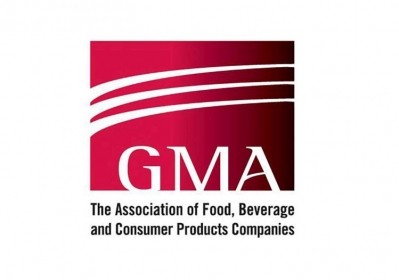USDA proposed rule on GMO labeling raises more questions than answers

Given that the deadline for submitting public comments is July 3, USDA will not meet the Congressionally-mandated deadline to finalize the rule by July 29, 2018, acknowledged agriculture secretary Sonny Perdue, who said the final rule would be issued “later this year."
We've pulled out some of the highlights of the proposed rule below, which provides some clarity on exemptions, but leaves two key questions - on definitions and thresholds - unresolved, leaving many manufacturers unclear on whether their products will be subject to GMO labeling or not.
One primary bone of contention - whether highly refined foods and ingredients that might contain no detectable modified DNA should be covered (eg. sucrose; dextrose; corn-starch; high-fructose corn syrup; and corn, canola, and soybean oils) - is kicked down the road, with USDA only acknowledging that there are “wide differences” in public opinion on this issue.
It notes, for example, that according to comments it has received, refined sugar from bioengineered sugarbeets may be "chemically and molecularly indistinguishable" from refined sugar from conventional sugarbeets, and would therefore not be subject to disclosure if it does not contain Recombinant DNA (or at least that the Recombinant DNA is not detectable through common testing methods).
However, if ingredients from crops that everyone knows are genetically engineered do not trigger labeling, this would exclude a large percentage of packaged foods that many consumers and advocacy groups assumed that a GMO labeling law was designed to cover.
Given that USDA was not tasked with defining Non-GMO as part of this exercise, and that foods made with ingredients known to be from GM crops may not all require GMO labeling under the final rule, one thing that does seem certain is that there will be a "bright future for third party certifications" such as the Non-GMO Project, predicted Andrea Bruce, Hershey senior counsel, global regulatory law at The Hershey Company.
Speaking at the recent American Conference Institute (ACI) food law conference in Chicago just before the rule was released, she added: "It won't define one of the most compelling claims in food marketing today."
What does 'bioengineered' mean?
The amended Agriculture Marketing Act defines ‘bioengineering’ with respect to a food, as food ‘(A) that contains genetic material that has been modified through in vitro recombinant deoxyribonucleic acid (DNA) techniques; and (B) for which the modification could not otherwise be obtained through conventional breeding or found in nature.”
USDA “proposes to directly incorporate this statutory definition into the definition of ‘bioengineered food’ without further interpretation of what ‘bioengineering’ means, but welcomes public comment on what could be considered to constitute ‘bioengineering’,” says the proposed rule, which acknowledges that there are “wide differences” in public opinion on this issue.
Gene editing*
The proposed rule makes no mention of whether ingredients from crops produced via other GE techniques such as gene-editing meet the definition of ‘bioengineered.’
Thresholds for triggering labeling
This is another area where the proposed rule poses more questions than answers, with USDA asking the public to consider three options:
- Exempting foods in which an ingredient contains a bioengineered substance that is inadvertent or technically unavoidable that accounts for no more than 5% of that ingredient by weight…
- Exempting foods in which an ingredient contains a bioengineered substance that is inadvertent or technically unavoidable, and accounts for no more than 0.9% of that ingredient by weight.
- Exempting foods containing ingredients known to be bioengineered as long as the total amount of all bioengineered ingredients used in the product is not greater than 5% of the total weight of the product.
Enzymes and yeasts
USDA acknowledges that many enzymes, yeast, and a number of foods produced in controlled environments are produced using bioengineering and seeks comments on whether they should be subject to labeling.
Exempt: Incidental additives
USDA proposes that incidental additives such as some enzymes produced via bioengineering should not be subject to labeling requirements unless they are used as ingredients and required to be included on the ingredients list.
Exempt: Organic food and food served in restaurants, supermarket delis, bars, cafes, lunchrooms
USDA certified organic food would be exempt, along with food served in restaurants, supermarket delis, bars, cafes, lunchrooms, salad bars “and other food enterprises located within retail establishments that provide ready-to-eat foods that are consumed either on or outside of the retailer's premises.”
However, food sold in bulk bins in retailers would be covered.
Exempt: Food from animals fed GE feed
Food (eg. meat, milk etc) from animals fed GE feed would be exempt from labeling standards.
Imported foods
To facilitate international trade, USDA is considering establishing recognition arrangements with foreign governments that have established labeling standards for bioengineered food such that each country could agree to recognize each other’s standards as comparable.
Very small food manufacturers are exempt
USDA seeks comments on whether the definition of a ‘very small food manufacturer’ (which would be exempt from labeling requirements) should be one with annual revenues of $500,000 or $5m.
Lists of bioengineered foods and disclosure options
In an attempt to make it “easier and less burdensome for consumers and regulated entities alike to understand what products may need to be disclosed,” USDA is developing two lists of bioengineered foods that are commercially available in the US:
- Bioengineered foods with a high adoption rate (from GE crops with an adoption rate of 85%+ in the US): These would be labeled ‘Bioengineered food’ (eg. for raw agricultural products or processed products such as cornmeal exclusively from bioengineered crops) or ‘Contains a bioengineered food ingredient’ (for multi-ingredient processed foods containing some bioengineered ingredients).
- Bioengineered foods that are not highly adopted: These could be labeled with the above statements or ‘May contain a bioengineered food ingredient.'
Options also include new bioengineered ‘BE’ logos, digital links coupled with a phrase such as ‘Scan icon for more information’ or phone numbers ‘Call/text for more food information’
Read the proposed rule in full HERE.
Here are some initial reactions to the proposed rule - we'll add more as we get them...
Food and Water Watch: “This rule will help keep consumers in the dark as it is intended. It’s filled with loopholes and would allow manufactures to use digital codes and other technology that make GMO disclosure more difficult for consumers than simple labels...The proposed sun and flower-based ‘BE’ labels manufactures could elect to use in their disclosure suggest to consumers the product is natural and sustainable, when genetically engineered foods are anything but..."
Alliance for Biotech Facts: “Products enhanced through biotechnology are as safe and healthy as any food on the shelf, in the fridge, or at the produce stand. The Alliance believes consumers should be informed when food contains genetic material introduced through bioengineering. However, products—such as pure oils, starches, and sugars—that may come from crops enhanced through bioengineering, but contain no genetic material, are no different from other safe and healthy foods, and should not require labeling.
"The Alliance does not believe that products developed through gene editing should be subject to mandatory disclosure when they do not meet the requirements for disclosure. Products developed through gene editing often can be found in nature or achieved through more traditional breeding methods. Gene editing is an efficient method of plant breeding that allows plant breeders to work within the plant’s own family to achieve desired characteristics without introduction of foreign DNA. Again, when the food is no different than food from conventionally produced plants, no difference in labeling should be required."
The Grocery Manufacturers Association (GMA):“We welcome the release of the proposed rule for the Biotech Disclosure Standard and will be working with our member companies to review and develop comments on the draft rule and the USDA questions. Our comments to USDA will reflect the ongoing commitment of our member companies to providing consumers with the transparency they need to make informed product choices... The SmartLabel digital disclosure initiative ... is one of the ways to provide the bioengineered ingredient information required by the federal law.”
The Food Marketing Institute (FMI): “Food retailers and their supplier partners are committed to consumer education through digital technologies like SmartLabel..."
*In a March 28 statement responding to questions over whether plants produced with techniques such as gene-editing require the same kind of regulatory oversight as crops utilising genes from different organisms developing using recombinant DNA technology, USDA noted that under its biotech regulations, it "does not currently regulate, or have any plans to regulate, plants that could otherwise have been developed through traditional breeding techniques as long as they are developed without the use of a plant pest as the donor or vector and they are not themselves plant pests. This can include plant varieties with the following changes:
Deletions—the change to the plant is solely a genetic deletion of any size.
Single base pair substitutions—the change to the plant is a single base pair substitution.
Insertions from compatible plant relatives—the change to the plant solely introduces nucleic acid sequences from a compatible relative that could otherwise cross with the recipient organism and produce viable progeny through traditional breeding.
Complete Null Segregants—off-spring of a genetically engineered plant that does not retain the change of its parent."

















